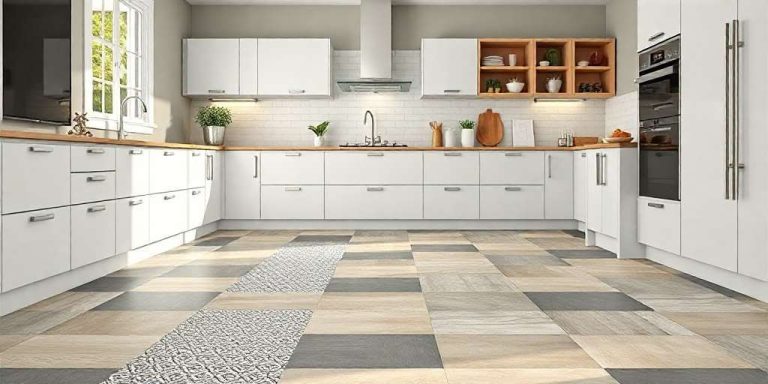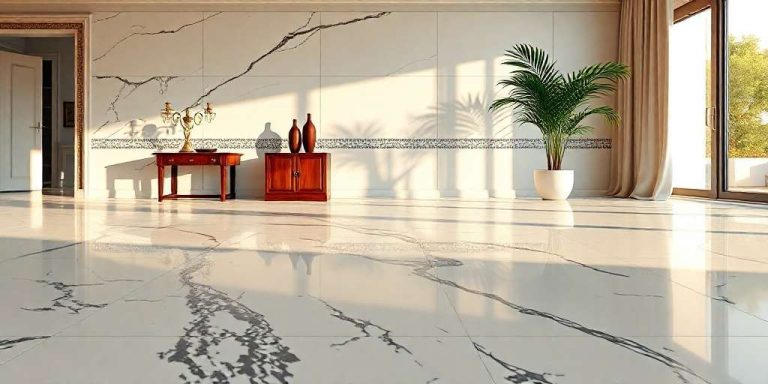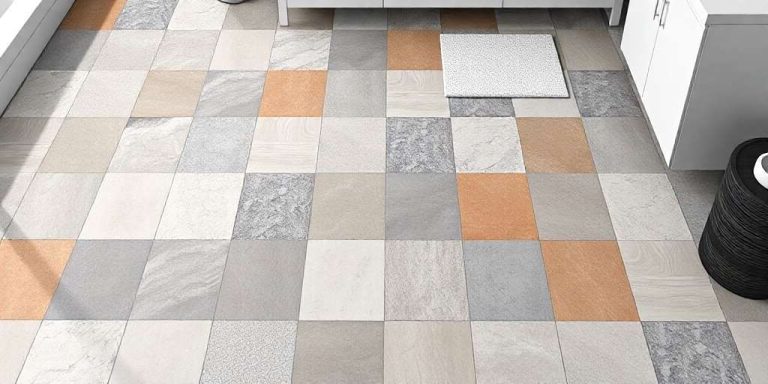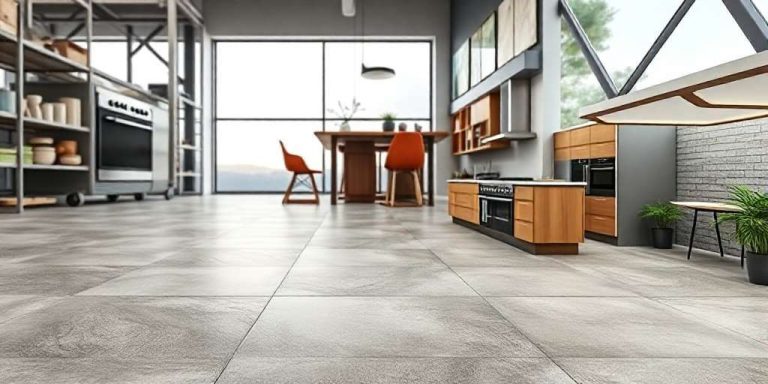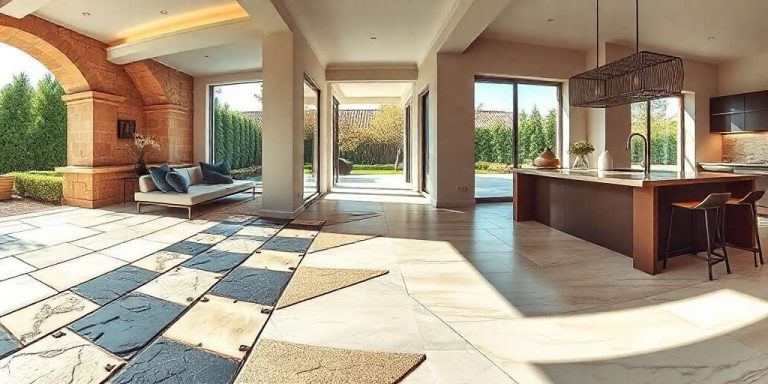Ceramic Tile: A Versatile Choice for Your Home
Ceramic tile has become a popular choice for both flooring and wall applications. Its combination of durability, aesthetic appeal, and versatility makes it suitable for various spaces in a home. This article will explore the history, characteristics, and innovative styles of ceramic tiles. It will also cover practical aspects like selection, installation, and maintenance for long-lasting surfaces.
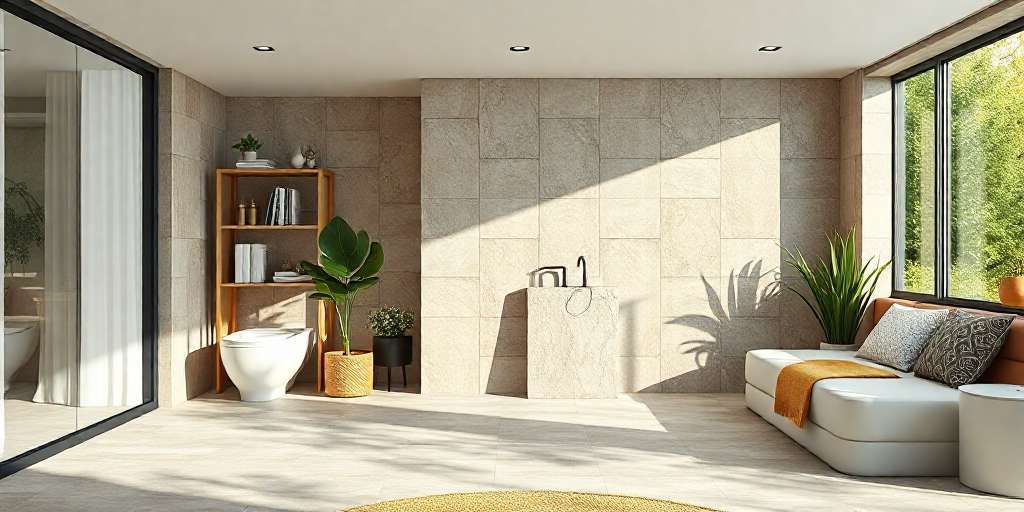
History and Evolution of Ceramic Tile
The origins of ceramic tiles can be traced back to ancient civilizations that flourished along the Mediterranean. In these cultures, artisans skillfully blended clay and crafted unique designs, laying the groundwork for what would become a staple in both construction and art. Early examples include the intricate mosaics of the Romans and the glazed tiles of the Islamic world, which offered both aesthetic appeal and functional benefits.
Over the centuries, the art of tile-making evolved significantly. During the Middle Ages, Europe saw a resurgence in the popularity of ceramic tiles with the introduction of patterned and colored varieties. These tiles were often used in churches and public buildings, serving both decorative and practical purposes. As trade routes expanded, influences from different cultures spurred innovation in design and manufacturing techniques.
The Industrial Revolution marked a turning point for ceramic tile production. Advancements in technology allowed for mass production, making these tiles more accessible to the general public. The introduction of new materials and methods led to the development of porcelain tiles, which offered superior durability and water resistance. This innovation paved the way for ceramic tiles to become a popular choice for residential and commercial applications.
- The late 19th century saw the rise of encaustic tiles, known for their vibrant colors and intricate patterns.
- The 20th century introduced new styles inspired by modern art movements, reflecting changing tastes and trends.
- Today, the ceramic tile industry continues to innovate, with contemporary collections that combine traditional craftsmanship with cutting-edge technology.
As a result of this rich history, ceramic tiles are now recognized for their versatility, allowing them to be used in various applications, from flooring to wall coverings. The intricate designs and durable nature of these tiles have stood the test of time and continue to enrich spaces throughout the world.
Have a project in mind? Our team is ready to help with samples, specifications, and quotes.
Characteristics of Ceramic Tiles for Flooring and Walls
Ceramic tiles are renowned for their remarkable durability and aesthetic appeal, making them a favored choice for both flooring and wall applications. Their resilience is a primary characteristic, as they are designed to withstand heavy foot traffic and resist wear over time. This makes them particularly suitable for high-traffic areas such as kitchens and entryways.
One significant advantage lies in their impervious nature. Many ceramic tiles are non-porous, which means they do not absorb liquids, thereby preventing stains and making them easier to clean. This feature is especially important in spaces where spills are common, such as bathrooms and dining areas.
- Resistance to Moisture: Ideal for bathrooms and kitchens.
- Variety of Styles: Available in numerous colors, textures, and patterns.
- Scratch Resistance: Suitable for areas with heavy furniture or foot traffic.
- Low Maintenance: Requires minimal effort to maintain their appearance.
Another appealing characteristic is the vast range of design options. From classic to modern finishes, ceramic tiles can mimic natural materials like wood and stone, allowing for creative interior design. This adaptability makes it easy to achieve a desired look, whether it’s a rustic farmhouse aesthetic or a sleek contemporary vibe.
Furthermore, the thermal properties of ceramic tiles contribute to their popularity. They can help regulate room temperatures, maintaining warmth in the winter while remaining cool during the summer. This not only enhances comfort but also can lead to energy savings in varying climates.
Finally, the eco-friendly nature of many ceramic tiles is worth noting. Many brands are increasingly adopting sustainable practices in their manufacturing processes, using recycled materials and eco-conscious methods. This commitment to sustainability aligns well with current consumer preferences for environmentally responsible products.
Ceramic Tile Flooring: Selection and Installation
Selecting the right ceramic tile for flooring involves considering various factors, including the tile’s durability, style, and maintenance requirements. High-traffic areas like kitchens and entryways necessitate tiles that are not only aesthetically pleasing but also able to withstand wear and tear. Porcelain tiles, for example, are an excellent choice due to their dense structure and low porosity, which enhance durability and reduce staining.
The aesthetic aspect is equally important. Tiles come in a myriad of colors, patterns, and finishes, allowing homeowners to create unique designs that match their decor. Whether opting for a traditional look with classic patterns or a modern vibe with sleek designs, the right choice can elevate the atmosphere of any room.
Selection Criteria
- Durability: Choose tiles rated for high foot traffic to ensure longevity.
- Water Resistance: For areas prone to moisture, like bathrooms, consider tiles with a low absorption rate.
- Style and Color: Select colors and patterns that complement the overall interior design.
- Size and Shape: Larger tiles can create a more spacious feel, while smaller tiles offer intricate design options.
Installation of ceramic tile flooring requires careful planning. Proper subfloor preparation is essential for achieving a smooth and level surface. The underlayment should be dry, clean, and structurally sound, providing a stable base for tile application. Once these conditions are met, selecting the right adhesive and grout is vital. Thin-set mortar is commonly used for bonding tiles to the floor.
During installation, precise measurement and layouts can prevent waste and ensure an aesthetically pleasing result. Utilizing spacers between the tiles helps maintain uniform grout lines, which contributes to a professional finish. It’s crucial to follow the manufacturer’s guidelines for both installation and grout curing times.
Post-installation care includes sealing the grout, which adds an extra layer of protection against moisture and stains. Regular maintenance, such as sweeping and mopping with appropriate cleaners, will keep the tiles looking pristine for years to come.
Innovative Ceramic Tile Collections and Styles
In the ever-evolving world of interior design, ceramic tiles have adapted to meet contemporary aesthetic demands while maintaining their time-honored durability. Several innovative collections stand out for their unique styles and exceptional quality.
- Pissano Cerámica’s Urban Chic Collection: This collection embodies modernity with bold colors and striking patterns. It allows for a playful mix of elements, appealing to those looking to make a creative statement in their spaces.
- Argenta’s Westone & Eastone Series: Inspired by the natural beauty of Portland stone, these tiles combine elegance with a rugged texture. They offer a sophisticated yet rustic appearance suitable for both residential and commercial settings.
- Haven Collection: Bringing the essence of wood into the realm of ceramic tiles, this collection provides the warmth and authenticity of wood grains without the maintenance concerns. Available in a variety of colors and finishes, it adds timeless charm to any room.
- Versilia Line: This series takes inspiration from Calacatta marble, creating tiles that convey luxury while ensuring exceptional durability. These tiles can seamlessly enhance the elegance of interiors, particularly in high-end applications.
Innovative materials and techniques facilitate the creation of stunning designs. Modern tiles often incorporate advanced manufacturing methods that enhance their functionality without sacrificing beauty. The use of technology, such as the Artech finish, delivers high performance, allowing tiles to remain resistant to wear and easy to maintain.
Trends indicate a growing preference for modern aesthetics, leading to a resurgence of geometric patterns and textures. This shift allows designers to create visually dynamic environments, whether aiming for a minimalist look or a more eclectic style. By experimenting with different finishes, including matte, glossy, and textured, designers can tailor spaces to convey specific atmospheres.
Contemporary ceramic tile collections prioritize sustainability as part of their innovation. Many manufacturers are focusing on eco-friendly materials and production methods to reduce their environmental footprint. As a result, these collections not only meet aesthetic needs but also contribute positively to the planet.
Applications of Ceramic Tiles in Home and Outdoor Spaces
Ceramic tiles are a versatile material suitable for various applications, enhancing both aesthetic appeal and functionality within homes and outdoor areas. Their robust nature makes them ideal candidates for high-traffic zones, ensuring longevity and ease of maintenance.
In indoor settings, these tiles are commonly found in:
- Kitchens: With their resistance to moisture and stains, ceramic tiles are a popular choice for backsplashes and countertops, creating a beautiful yet practical space.
- Bathrooms: Water resistance and easy cleanup make ceramic tile a prime option for walls and floors, helping to create a stylish and hygienic environment.
- Living Areas: From cozy dining rooms to expansive living rooms, various designs allow for customization that complements existing decor.
Outdoor areas also benefit greatly from ceramic tiles, as they can withstand various weather conditions. Key applications in these spaces include:
- Patios: Durable and visually appealing, ceramic tiles can transform a simple patio into an inviting outdoor retreat.
- Pool Decks: Slip-resistant options are perfect for poolside areas, providing safety without compromising on style.
- Walkways: Adding aesthetic charm and durability, ceramic tiles are effective for creating pathways that link different sections of a yard or garden.
Incorporating ceramic tiles significantly enhances the aesthetic and practical aspects of environments, both indoors and outdoors. Their capacity to effortlessly blend with other design elements ensures their continued popularity in contemporary architecture and interior design.
Maintenance and Care for Long-Lasting Ceramic Tile Surfaces
To maintain the beauty and durability of ceramic tile surfaces, regular cleaning and proper care are essential. Dust, dirt, and grime can accumulate over time, dulling the appearance of the tiles. A routine cleaning schedule can help preserve their original shine and color.
- Use a soft broom or vacuum cleaner with a gentle attachment to remove loose debris from the surface.
- Mopping with a pH-neutral cleaner and warm water is recommended. Avoid harsh chemicals that may damage the glaze.
- For stubborn stains, a mixture of baking soda and water can be effective. Apply it to the stained area and gently scrub with a soft cloth.
Sealing the grout lines is another important aspect of care. This helps to prevent stains and moisture from seeping in, which can lead to discoloration or damage. It is advisable to apply a grout sealer every six months or as needed, depending on the level of foot traffic in the area.
- Inspect the grout regularly for cracks or wear, as these can compromise the integrity of the tile surface.
- Scrub any mildew or mold that may develop in damp areas, such as bathrooms, using a solution of vinegar and water.
Protecting ceramic tile surfaces from heavy impacts and sharp objects is crucial as well. Area rugs or mats can be placed in high-traffic areas to minimize wear. Felt pads under furniture legs can prevent scratches when moving items around.
Lastly, addressing spills promptly can prevent any long-lasting stains. Wiping up liquids immediately ensures that the tiles remain in pristine condition. By following these maintenance tips, ceramic tile surfaces can remain attractive and functional for many years.

